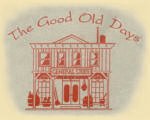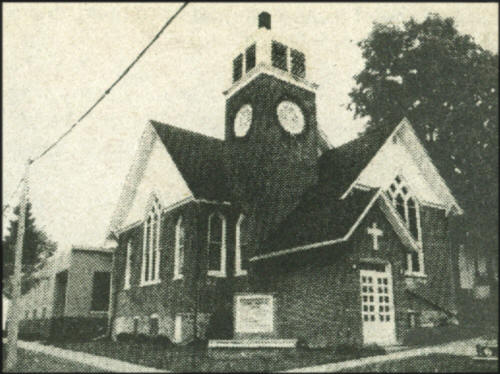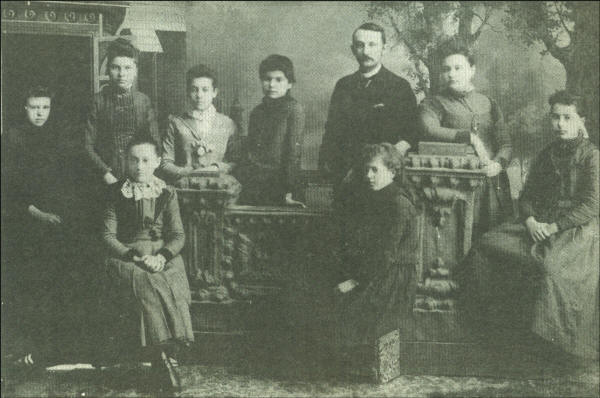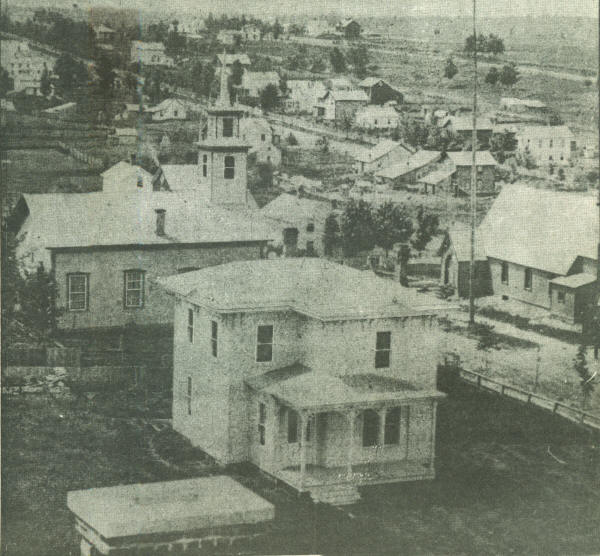|
|
 |
Clark County Press, Neillsville, WI November 8, 1995, Page 28 Transcribed by Dolores (Mohr) Kenyon. Index of "Oldies" Articles
|
|
|
 |
Clark County Press, Neillsville, WI November 8, 1995, Page 28 Transcribed by Dolores (Mohr) Kenyon. Index of "Oldies" Articles
|
Good Old Days
Methodist Church
Clark County & City of Neillsville’s First Church
By Dee Zimmerman
The first denomination to provide worship services in the new frontier of what would be Clark County and city of Neillsville was the Methodist Church.
James and Henry O’Neill had set-up a saw mill on the bank of a creek that bears their name today, shortly after they arrived in 1845. Their residence was built near the saw mill. The O’Neill’s and the early Pleasant Ridge settlers were of English and Scotch-Irish descent, many of Methodist denominational background.
The first circuit rider to arrive in the O’Neill area on horseback was from Prairie du Chien in southwestern Wis. The rider was R. D. Wood, a Methodist minister, who came north into the new frontier in 1847. As he came riding into what is now Neillsville, he met James O’Neill who invited him to lodge and preach in the O’Neill home.
The Alma Circuit was organized in 1856 with Rev. Joll Brown appropriated as its head and Neillsville was one of his appointed charges. Through Rev. Brown’s efforts a membership of 34 and 18 probationers was established for the year.
Two years later, the Rev. James Cady, a supply minister, was appointed to the Alma Circuit. He held services regularly every three weeks in the O’Neill home. Under his influence a “Methodist Class” was organized, the beginning of Methodism as a church in Neillsville.
The Rev. William Carl came to preach here in 1860. The following people became members: James Lynch, M. E. Lynch, M. A. McAdams, Jane O’Neill and M. A. Sturdevant. A total of $14.97 was the monetary intake for the year. Most of the pay was in the form of maple syrup, honey, deerskin gloves, hand knitted sox, bed quilts, oats, chickens, etc. The pastor’s board and room were provided by the parishioners.
In 1869, the James O’Neill family donated a plot of land on the corner of Fourth and Court Streets. A small frame building, the Methodist church, was built on the lot, site of the present educational addition. The Methodists were the first to hold services in the county and the first to build a church in the county.
It was a common practice, then, for ministers to serve each congregation for only a short time. Thus, from 1859 to 1900 the Neillsville congregation had a total of 21 ministers.
Records showed that efforts were made encouraging parishioners to give money for regular offerings. The congregation felt their emphasis on giving was heeded when $60 in cash was tallied for the year and there were still some items of food staples given.
The wood frame church building built in 1869 was later destroyed by fire. The present structure was built in 1895, under the direction of G. N. Foster, located on the same lot of the first building.
A dedication of the new church was held in Oct. of the year the building was completed and paid for with the exception of less than $100. Guest pastors for the occasion were Rev. M. B. Balch of Mauston, who gave the Sunday sermon; Dr. Haylett of Lawrence University, Dr. Benson of Eau Claire and Rev. Trim of Sparta all contributed speeches during the weekend festivities.
The collections in subscriptions and cash amounted to $625 which left less than $100 to pay to clear the church of debt. “Geo. Austin offered to give a fine Jersey cow to sell and apply proceeds on that and the Austin cows are worth $50 each on any day,” as was reported in the 1895 Neillsville Times.
The early 1930’s brought financial struggles upon the congregation as the hard times affected other churches and businesses in the county. Patience and faith that circumstances would change were enduring factors.
In 1939, with Rev. Obed Asp as minister, all branches of the country’s Methodist churches merged on a national level to be named the Methodist Church. Again, later, the United Brethren churches joined with Methodist churches under the title of United Methodist churches.
The first church parsonage was a house just west of the old armory on Fourth Street. After that, and for many years, the parsonage was the house at 214 Grand Avenue. In 1933, the house just east of the church at 205 East Fourth Street was made a gift to the church from Hays Lambert, a member of the congregation. That house still serves as the parsonage.
After 100 years, the same building serves the United Methodist church’s congregation in Neillsville. Various remodeling and building additions have been done through the years. The original high spire was removed and a lower tower model replaced it. The entrance was enclosed and a new brick exterior added in recent years. The congregation has kept their place of worship and fellowship attractive, comfortable and inviting to those in the community. Once again, this year, they will invite and serve a Thanksgiving dinner to those who would otherwise be home alone – a gesture of sharing their blessings.
 |
A recent photo of the United Methodist Church which celebrates its 100th year in this building the corner of Fourth and Court Street in Neillsville.
 |
A Methodist church Sunday school class with pastor and teacher in 1890 or 1891: left to right, back row: second person, Carrie Beardsley; fourth girl, Nina (Hommel) Woelffer, last girl, Ethie (Krumrey) Torville (Turville?). Kitty Kountz is in middle of front row. The Pastor of 1890 was E. H. McKengie. (Nina Hommel) Woelffer was the grandmother of Charlotte Drescher. (Photo courtesy of Mary (Neverman) Lauer)
 |
A view captured from top of the old court house, looking southwest, circa 1880. The large white house in the foreground is now offices of the Johnson, Sautebin & Indeberg Law Firm. Behind it is the first Methodist Church building that was destroyed by fire in the mid 1890’s. Across the street, west, is the Episcopal Church building, now Rural Insurance office and Voigt residence. The road in background view is Hewett Street.
|
© Every submission is protected by the Digital Millennium Copyright Act of 1998.
Show your appreciation of this freely provided information by not copying it to any other site without our permission.
Become a Clark County History Buff
|
|
A site created and
maintained by the Clark County History Buffs
Webmasters: Leon Konieczny, Tanya Paschke, Janet & Stan Schwarze, James W. Sternitzky,
|